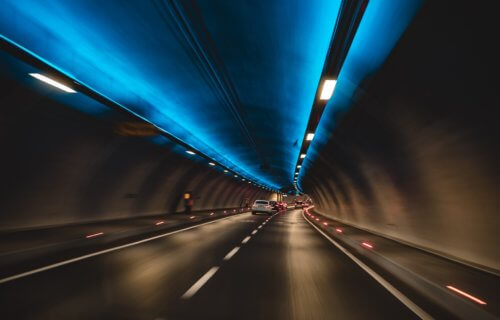FUZHOU, China — Driving through a tunnel can be a nerve-racking experience for many motorists. From narrow lanes, to poor lighting, to the anxiety of being in an enclosed space, navigating a tunnel can be challenging even for an experienced driver. So what can help drivers ease these fears and make it through to the other side? Researchers say a little background music may be all you need to calm the nerves.
“When drivers go through a tunnel, they need to process a large amount of information quickly. We wanted to find the best way to use sound to keep drivers alert and focused inside tunnels. We here compare the effect on brain activity and physiology of different types of sound: slow versus fast music, warning sounds such as sirens, and a voice reminding them to drive safely,” says corresponding author associate professor Yanqun Yang from China’s Transportation Research Center in College of Civil Engineering in a media release.
“We show that the best solution is to play slow music inside the tunnel, but to play alarming sounds like sirens at the entry and exit or during emergencies.”
Tunnel driving can be extremely dangerous
Studies find that although accidents occur more frequently on open roads, car accidents tend to be more serious inside tunnels.
Study authors add that these accidents typical happen near the entrance to a tunnel. However, once drivers get used to the atmosphere of driving inside a long, enclosed space, accident rates typically drop. Unfortunately, the risk jumps back up around the mid-point of the tunnel. Researchers say this is probably due to boredom and drivers letting their guard down.
The sound makes all the difference
In this study, researchers recruited 40 young drivers for an experiment using virtual reality. Each “drove” through a simulated three-mile tunnel, driving between 50 and 60 mph, while viewing the tunnel through VR screens. They also used a driving console with a steering wheel and pedals which the team monitored to see how much pressure participants applied while in the tunnel.
Yang’s team then compared how drivers responded to five different sounds. Those included a recording of the sound inside a real tunnel, the slow music song “Canon” with 72 beats per minute, and the fast song “Croatian rhapsody” with 96 bpm. Scientists also subjected the group to a police siren and a female’s voicing giving safety reminders.
Results show drivers drove fastest through a tunnel while fast music was playing and the slowest while slow music played. The group was also more relaxed and had a smaller mental load while listening to slow music. Moreover, 63 percent chose slow music as their preferred background soundtrack.
“We find that slow music played as background throughout the tunnels, replaced by sirens only at spots and times when the risk of accidents is highest, is best to keep drivers alert, at ease, and not tired, while stimulating them to be extra vigilant and focused when needed,” says co-author Dr. Wei Lin from the University of Cincinnati.
“There still a long way to go before more specific design and management recommendations can be proposed. For example, future studies should test the effect of a greater range of sounds on drivers who differ in age, driving experience, hearing sensitivity, and degree of fatigue. But our study is a proof of principle, which pushes our knowledge on road safety a step forward.”
The study appears in the journal Frontiers in Psychology.
